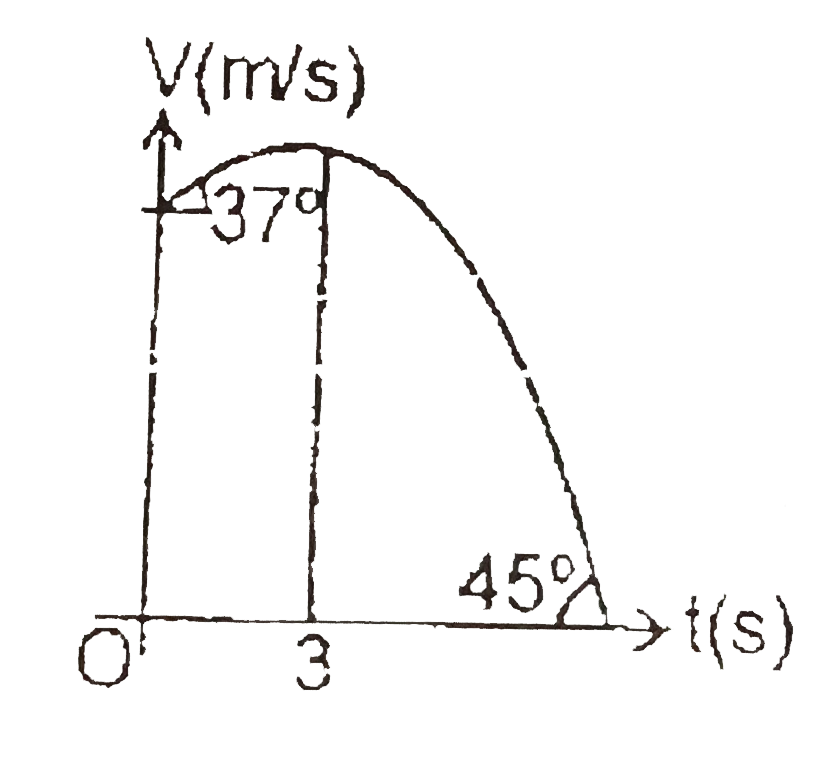The acceleration of a particle moving rectilinearly varies with the magnitude of its velocity as a=−√v. Find its initial speed, if it stops after t0=1 sec from starting.Solution in Bengali
Step by step video & image solution for The acceleration of a particle moving rectilinearly varies with the magnitude of its velocity as a = -sqrtv. Find its initial speed, if it stops after t_0 = 1 sec from starting. by Physics experts to help you in doubts & scoring excellent marks in Class 11 exams.
Updated on:21/07/2023Topper's Solved these Questions
Similar Questions
Find the unit of speed.
View SolutionAn ideal gas has been placed in a tank at 37∘C. The guage pressure is initially 609 kPa. One fourth of the gas is then released from the tank and thormal equilibrium is established. If the temperature is now 317∘C, then the gauge pressure will be
View SolutionA particle moves rectilinearly with initial velocity u and constant acceleration a. Find the average velocity of the particle in a time interval from t=0 to t=t second of its motion.
View SolutionA particle starts moving and its displace-ment after t seconds is given in meter by the relation x=5+4t+3t2. Calculate the magnitude of its
a. Initial velocity
b. Velocity at t=3s
c. Acceleration
View SolutionA particle moves vertically with an upwards initial speed v_0 = 10.5 ms^(-1). If its acceleration varies with time as shown in a-t graph in figure, find the velocity of the particles at t = 4s.
View SolutionA particle starts moving at t = 0 in a circle of radius R = 2m with constant angular acceleration of a - 3 "rad/sec"^(2) . Initial angular speed of the particle is 1 rad/sec. At time t_(0) the angle between the acceleration vector and the velocity vector of the particle is 37^(@) . What is the magnitude of the acceleration of the particle at t_(0) ?
View SolutionA particle starts moving in a straight line under an acceleration varying linearly with time. Its velocity time graph is as shown in figure. Its velocity is maximum at t = 3 sec. The time (in sec) when the particle stops is (tan37∘=3/4)

View SolutionA particle starts from rest on a straight path, Its acceleration is linearly varying with time, such that velocity of the particle at t=2 sec and t=4 sec is 6ms−1 respectively. Find acceleration of the particle at t=i sec.
View SolutionA particle has an initial velocity of 3hati + 4hatj and on acceleration of 0.4hatj + 0.3hatj . The magnitude of its velocity after 10 s is
View Solutionएक समान त्वरण से गतिमान कण अपनी गति के 11 वे सेकण्ड में 720 सेमी और 15 वे सेकण्ड में 960 सेमी दुरी तय करता है । इसका प्रारंभिक वेग व त्वरण ज्ञात कीजिए ।
View SolutionThe acceleration of a particle moving rectilinear varies with the magnitude of its velocity as a =−√v. Find its initial speed, if it stops after t0=1 sec from starting.
View SolutionAn object, starting with an initial speed and moving at constant acceleration traveIs 150 m in 5 s. The acceleration stops after this and in the next 5 s the object traveIs 200 m farther. Find the initial velocity and acceleration of the object.
View SolutionA car starts to move from rest with uniform acceleration 10ms−2 then after 5 sec, what is its velocity?
View SolutionAcceleration of a particle varies with time as a=12t2m/s2. If the particle starts its motion from rest,then its displacement in initial 2 seconds will be ?
View Solutionएक वस्तु विराम से प्रारम्भ होकर एकसमान त्वरण से चलती है। यदि n सैकण्ड पश्चात् इसका वेग v हो तो अंतिम दो सैकण्ड में इसका विस्थापन है
View SolutionA particle starts with initial velocity 4m/s and moves such that acceleration is given by a=√V
It's velocity after a time interval of 4 sec is
View Solution
